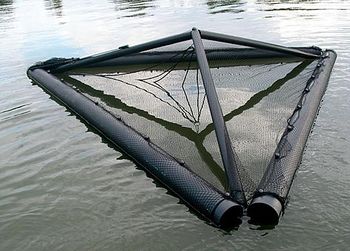Aquaculture
Aquaculture is farming on water. Many of the same principles as farming on land apply, and there can also be synergy between land-based and water-based farming - for example, the tadpoles that will occur endemically in ponds in most climates are an excellent food source for chickens.
Because fish are cold-blooded, and because water provides buoyancy so they do not have to expend energy to hold themselves up all the time, they are much more energy-efficient organisms than land based animals. Aquaculture is much more efficient than land-based agriculture in terms of the energy used to make a unit of food.
Water quality can be controlled to a certain extent by landscape design. Large stones placed in a pond will serve as a heat sink, making the water cooler in hot weather and warmer in cool weather. Growing reeds helps to oxygenate the water. Freshwater reeds grow much faster than any land-based plants can, so make a good source of feed for herbivorous animals. Algae often forms the bottom of the food chain in an aquaculture system and goes on to be converted into larger edible organisms. Therefore, an area of still water with tree stumps where algae will grow can be advantageous.

See also aquaponics, a more controlled method of growing fish, and algae farming.